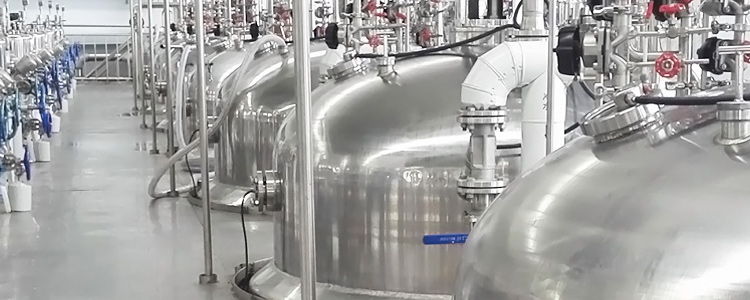Enramycin
Enramycin Enramycin is a polypeptide antibiotic produced by fermentation of Actinomyces fungicidicus. It is a combination of unsaturated fatty acids and more than a dozen amino acids. Enramycin has strong activity against Gram-positive bacteria, especially against harmful Clostridium in the intestine. It is not easy to produce drug resistance after long-term use, because it changes the bacterial population in the intestine, so it has a good utilization effect on the nutrients in the feed, which can promote the weight gain of livestock and poultry and improve the feed conversion rate. Enramycin has high stability in feed. It is rarely degraded after long-term storage at room temperature. It is also very stable in the process of making granular material. After mixing with feed, the titer of enramycin during long-term storage at room temperature decreases little. Enramycin is not degraded in the intestine and can maintain its original antibacterial activity. Antibacterial mechanism 1) The effect of enramycin on Gram-positive bacteria is strong, and the main mechanism is to inhibit the synthesis of bacterial cell wall. It leads to the increase of intracellular osmotic pressure and the infiltration of extracellular fluid into the bacteria, causing the bacteria to deform, swell, rupture and die. Enramycin mainly acts on the fission stage of bacteria, which is not only bactericidal, but also bacteriolytic. The minimum inhibitory concentration was 0.05-3.13 μ g/ml 2) Antibacterial ability of enramycin against Clostridium perfringens: Clostridium perfringens is common in feed. It can damage the small intestine, aggravate the severity of coccidiosis and reduce the production performance of livestock and poultry. It is one of the main causes of chicken feces, necrotizing enteritis and pig dysentery, and has become a problem of universal concern all over the world. In the experiment of several growth promoting antibiotics against Clostridium perfringens isolated from broiler farms, it was found that enramycin had the strongest antibacterial ability, and no drug-resistant strains were found. Advantages and characteristics in aquaculture 1) The micro addition of enramycin in the feed can promote the growth and significantly improve the feed reward. 2) Under both aerobic and anaerobic conditions, enramycin can show good antibacterial effect against Gram-positive bacteria. Enramycin has a strong effect on Clostridium perfringens, which is the main cause of growth inhibition and necrotizing enteritis in pigs and chickens. 3) There is no cross resistance to enramycin. 4) The resistance to enramycin is very slow, and Clostridium perfringens resistant to enramycin has not been isolated. 5) Because enramycin is not absorbed in the intestine, there is no need to worry about drug residue and no withdrawal period. 6) Enramycin has stable performance in feed and remains active even in the process of processing granular material. 7) Enramycin can reduce the loose feces of chicken chops. 8) Enramycin can inhibit ammonia producing microorganisms, so it can reduce the concentration of ammonia in intestines and blood of pigs and chickens, so as to reduce the concentration of ammonia in livestock houses. 9) Enramycin can reduce the clinical symptoms of coccidiosis, which may be due to the strong inhibitory effect of enramycin on anaerobes secondary to infection. Clinical application research Because enramycin has a wide range of anti Gram-positive bacteria, excellent growth promotion and improving feed utilization, it is often used as an antibiotic growth promoter for poultry, pigs and fish in clinic. Xu chuanlai et al. Applied three antibiotic additives, enramycin, aureomycin and bacitracin, to feed, and carried out comparative experiments on production performance and economic benefits of 1200 AA broilers. The results showed that enramycin could significantly improve the performance of broilers, and the economic benefits were 3.75% and 31.6% higher than those of aureomycin and bacitracin groups, respectively. The feeding experiment showed that adding a small amount of enramycin to the diet of piglets could improve the digestibility and utilization of feed protein and dry matter, promote the growth of piglets, increase daily weight gain, reduce the diarrhea rate of piglets, and alleviate stress. The addition of enramycin 0.02 ‰ in feed can significantly improve the weight gain effect of 60 ~ 120 day old pigs and improve the commercial performance of pigs. Adding 2mg / kg and 6 ~ 8mg / kg enramycin to the feed can accelerate the growth rate of allogynogenetic crucian carp, reduce the feed coefficient and reduce the feed cost. effect Effect on chicken Enramycin mixture can promote growth and improve feed reward for broilers and reserve chickens. Effect of preventing watery stool 1) Sometimes, due to the disorder of intestinal flora, chickens can drain feces. Enramycin mainly acts on intestinal flora and can improve the poor condition of drainage and defecation. 2) Enramycin can enhance the anti coccidiosis activity of anti coccidiosis drugs or reduce the occurrence of coccidiosis. Effect on pigs Enramycin mixture can promote growth and improve feed remuneration of piglets and bred pigs. According to the results of many tests, the recommended dose for pigs is 2.5-10ppm Effect of preventing dysentery The addition of enramycin to piglet open feed can not only promote growth and improve feed reward. And it can reduce the incidence of diarrhea in piglets. Aquatic application effect Adding 2, 6 and 8 ppm of enramycin to the diet can significantly increase the daily gain of fish and reduce the feed coefficient.







